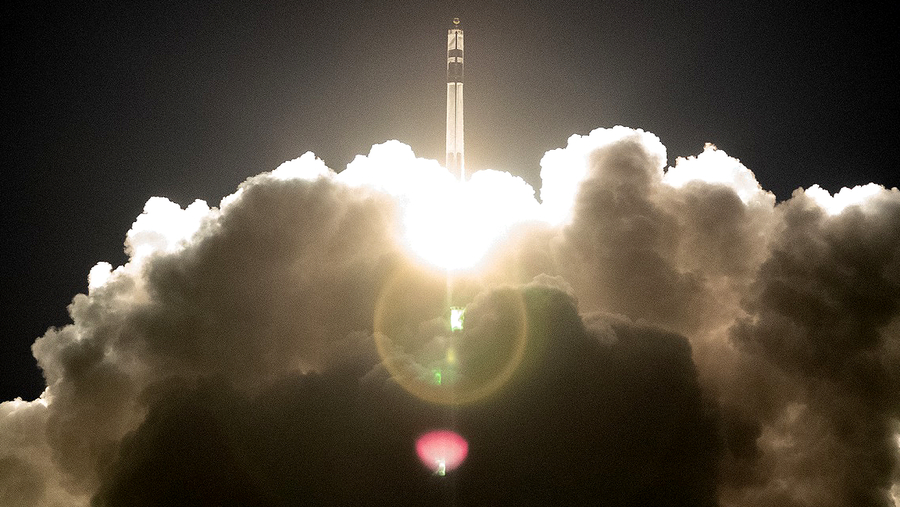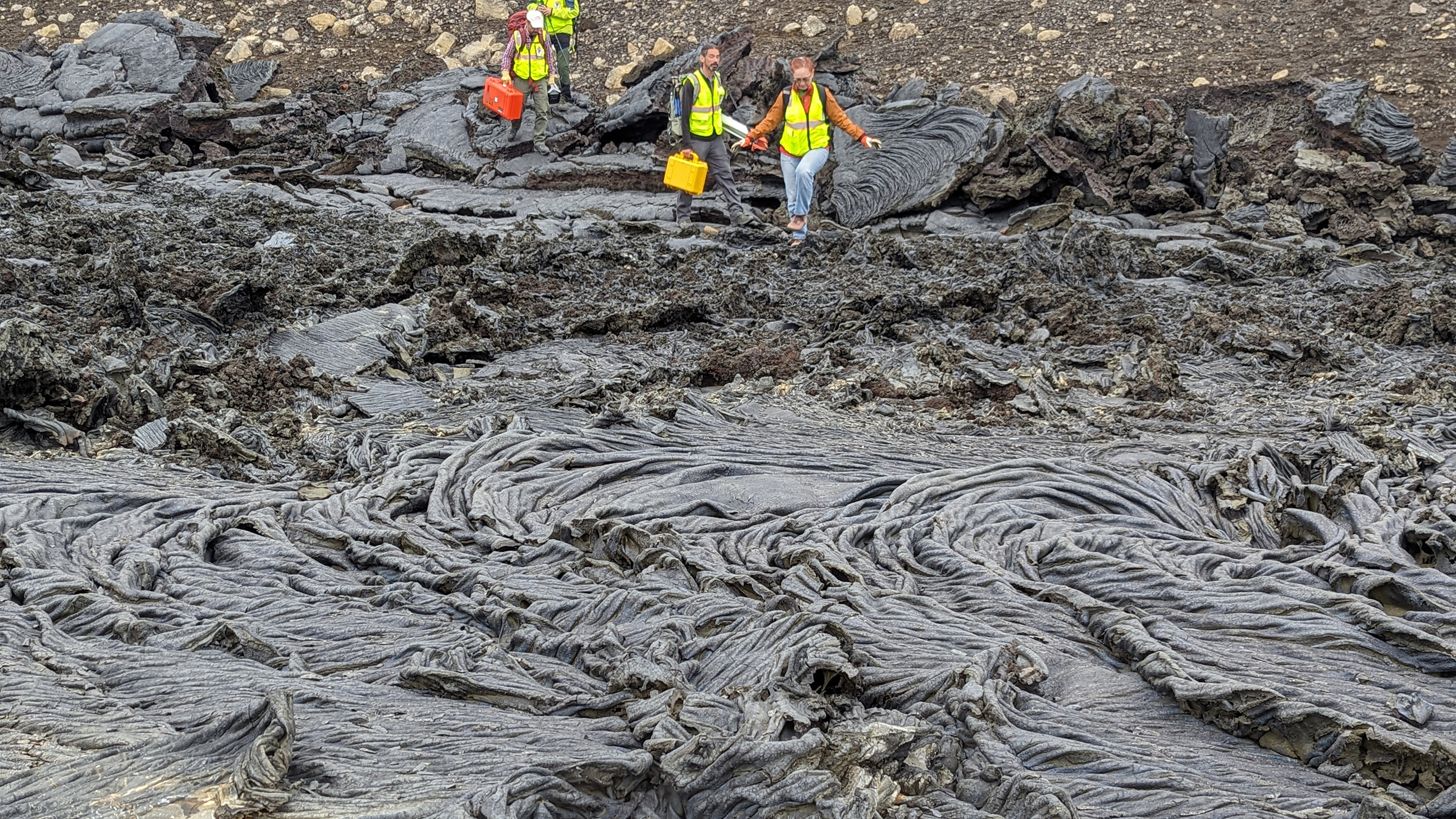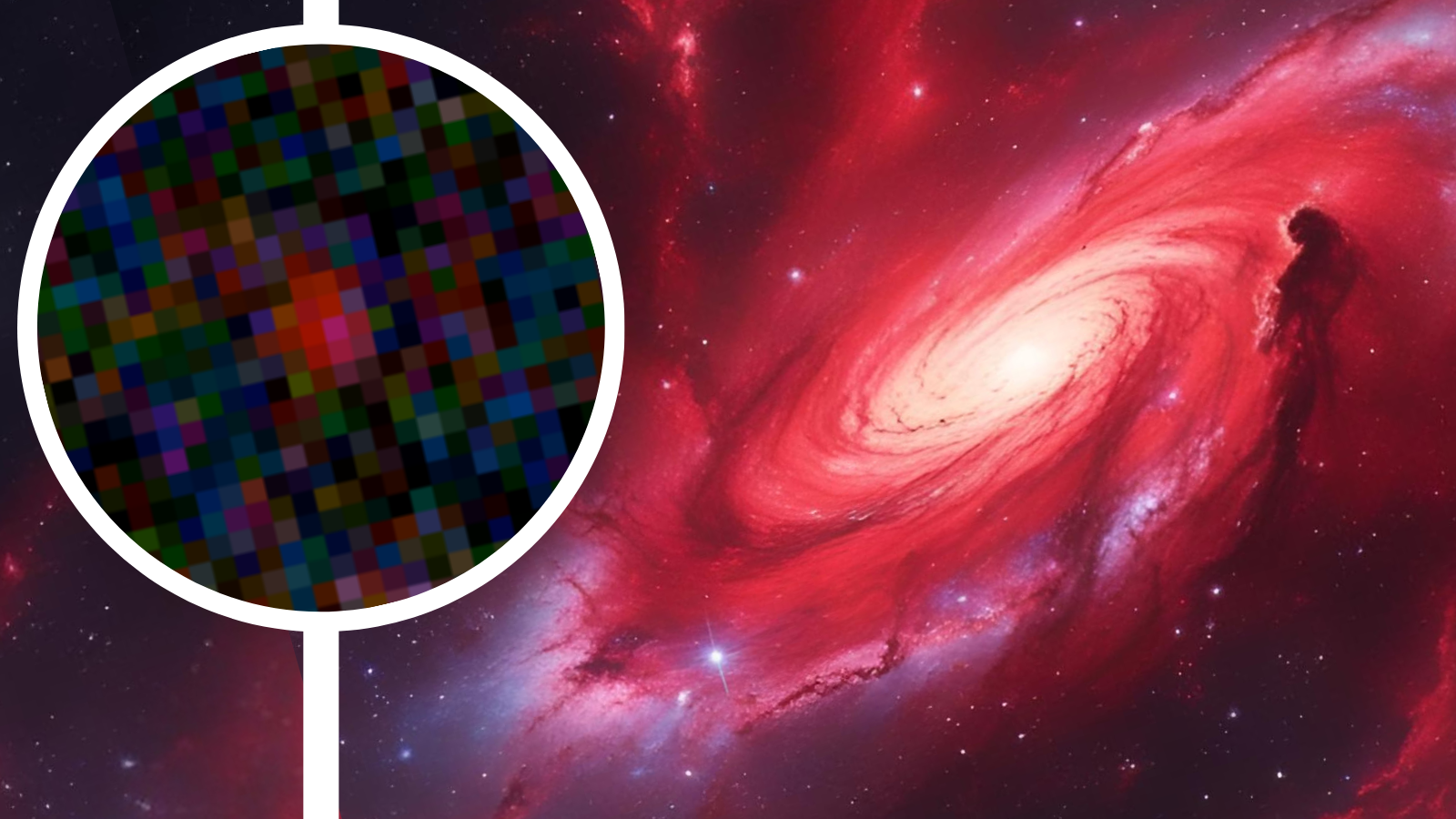Can a private space mission pierce Venus's clouds?
Amid uncertainty over space agencies’ plans for future Venus exploration, enthusiasm for a private-sector mission grows.

With the search for extraterrestrial life set to define much of 21st-century space science, one burning question researchers face in their planning is this: How far away is the nearest Earth-like planet?
The answer, according to some, is “right next door” but not in the direction you might think. Although missions to Mars account for an outsized amount of global spending on interplanetary exploration, the Red Planet is only a tenth the mass of our own—a pint-sized, freeze-dried mini-Earth more than anything else. Venus, by contrast, can be considered Earth’s evil twin—almost identical in size and mass, albeit with thick sulfuric acid clouds and a broiling pressure-cooker climate with surface temperatures hot enough to melt lead. How exactly Earth’s sunward sister world went so far astray is one of the greatest mysteries of planetary science—and a potential keystone for astrobiology.
Yet precisely because Venus appears so profoundly unwelcoming, it’s been almost three decades since NASA has had a dedicated mission there; the last of these, the Magellan mission, ended in 1994. This long hiatus looked set to change in late 2020, after a research team reported tantalizing evidence of phosphine gas, a possible biosignature, drifting through Venus’s relatively clement upper atmosphere. The following year, NASA’s reconnection with Venus seemed secured with the space agency’s selection of two missions slated to launch in the late 2020s: the orbiting Venus Emissivity, Radio Science, InSAR, Topography and Spectroscopy (VERITAS), along with the Deep Atmosphere Venus Investigation of Noble Gases, Chemistry, and Imaging (DAVINCI) project, which includes a parachuting probe to drift through the Venusian clouds.
Related: 1st-ever private Venus mission delayed until at least 2025
Those picks were shortly followed by the European Space Agency’s go-ahead with a Venus-circuiting mission of its own, EnVision, scheduled to launch in the early 2030s, with a NASA-sourced, state-of-the-art synthetic aperture radar included in its impressive instrument suite.
Touted as a “triple crown” moment for Venus researchers, this spacecraft trio would collectively revolutionize our understanding of the familiar-but-alien world, mapping its interior, surface and atmosphere in unprecedented detail.
At least, that was the plan. Today with grim budgetary forecasts and NASA and ESA alike struggling to fulfill a bold vision for returning samples from Mars, the outlook for Venus is decidedly less cheery. Evidence suggestive of phosphine has seemingly evaporated under deeper scrutiny from skeptics, and VERITAS has suffered a multiyear delay that poses an existential threat to the mission
Get the Space.com Newsletter
Breaking space news, the latest updates on rocket launches, skywatching events and more!
VEXATION AND VERITAS
These setbacks were the dark background for a late-October gathering of NASA’s Venus Exploration Analysis Group (VEXAG) in Albuquerque, N.M. Composed of Venus-centric planetary scientists, VEXAG is the space agency’s community-based forum to shape strategies and set priorities for future Venus studies. The meeting was the largest ever in VEXAG’s history; between virtual and in-person registrants, there were a total of more than 400 participants, and more than half of the in-person participants were there for the first time. All took part seeking hopeful rays of light in an otherwise oppressive gloom. In overview remarks at the meeting’s onset, NASA’s Lori Glaze, head of the space agency’s planetary science division, offered a clear-eyed assessment of the challenges ahead and advised vigilance.
“At this point for 2024 we don’t know what our funding is going to look like. There are a lot of uncertainties right now, which makes it a little hard to plan,” she said. “Let’s all stay together—stand together and stand for NASA science and stand for science in general. I think if we do that, we can weather this, and we can pull through.... This hopefully could be a short-term tightening. We need to be ready to rebound.”
Researchers behind VERITAS are eager for a change. NASA chose to delay the mission last year until no earlier than 2031 for reasons entirely separate from VERITAS itself—chief among them an overstuffed queue of other high-priority projects at the Jet Propulsion Laboratory (JPL), which is the space agency’s lead center for VERITAS.
Although NASA still trickle-funds VERITAS to maintain its science team, funding for the mission’s engineering team is presently nil, says Suzanne Smrekar, principal investigator of VERITAS at JPL. That funding shortfall is concerning, she notes, because it could weaken support for the project commitment from international partners. But a more immediate problem is the attrition of mission-critical personnel such as specialists for the spacecraft’s radar, the most important part of the entire project.
“We can’t pay them,” Smrekar told VEXAG, adding that a number of key team members have already left the mission. “Everyone has done their best to create notes and leave as many breadcrumbs as they can for people to pick things back up. But that’s not a substitute for the knowledge developed over a decade.”
While the VERITAS team doggedly awaits redemption, however, VEXAG’s chair Noam Izenberg, a planetary scientist at the Johns Hopkins University Applied Physics Laboratory in Laurel, Md., says there’s no shortage of other work to do. “We need to pursue more preparatory research for the upcoming missions,” he says, from finishing long-underfunded and languishing Venus mapping projects to undertaking new studies in the lab and in vaguely Venus-like “analog” environments right here on Earth.
“We want VERITAS restarted and launched at the soonest opportunity,” Izenberg says. “We want DAVINCI to continue along its path to launch in 2029,” along with support for EnVision.
BACK TO LIFE

Although it would be no substitute for the multibillion-dollar missions mounted by governments, the prospect of a high-risk, high-reward private Venus exploration initiative was one of the meeting’s hottest topics. Named the Venus Life Finder (VLF) mission and motivated in part by the controversial claims of Venusian phosphine, the project is led by Sara Seager, a planetary astronomer at the Massachusetts Institute of Technology. The plan calls for sending a small probe to plunge through the planet’s clouds to sniff out the chemistry therein.
VLF has already secured its ride to Venus via Rocket Lab, an upstart commercial launch provider. The exact launch date has yet to be determined—and the mission’s total cost remains undisclosed—but a launch window opens December 30, 2024, and extends into 2025. Rocket Lab is keen to partner with researchers to carry out impactful science missions with a small rocket, small spacecraft and relatively small budgets, says Peter Beck, the company’s founder, president and chief executive officer.
“This shift presents enormous opportunity for a new kind of interplanetary exploration,” Beck says. “Instead of working for decades on large, multibillion-dollar spacecraft, we can quickly and cost effectively send instruments to other planets, rapidly learn from that data and then iterate with a follow-up mission soon after.... [VLF] will demonstrate this as the first private mission to the planet, something that would have previously required government resources and decades of development,” he adds.
In a briefing to VEXAG, Christophe Mandy, Rocket Lab lead system engineer for interplanetary missions, detailed how the probe will experience a five-minute free-fall through Venus’s thick cloud layers and take measurements every two kilometers of its descent until it succumbs to the harsh conditions circa 20 kilometers above the surface. “We’re hoping that by demonstrating that this is possible, it might be able to trigger more interest,” Mandy said.
A NEW PARADIGM

Tucked inside the VLF probe will be its beating heart, a single specially-designed instrument dubbed an autofluorescence nephelometer that can sense signs of complex chemistry—phosphine-generating or otherwise—that is taking place within Venusian cloud droplets. The instrument is already being assembled and tested, Seager says. “We’re not doing the depth and breadth of science that the other [Venus] missions are doing; you might even think of us more like a tech demo mission. We have deadlines, and we’re moving towards them.”
Private money has been fueling the effort. Early support came from the Breakthrough Initiatives, the brainchild of science and technology investor and philanthropist Yuri Milner. M.I.T. alumni have chipped in, too, among other sources. The infusion of cash has backed the science team, instrument development and preparatory lab testing, Seager adds. “We’re trying to use this first quick mission to demonstrate that we can rally private funds to do something with a fast turnaround.”
Seager deems the approach a new paradigm, a game-changer. “We’re saying it is worth doing smaller pieces of the puzzle more frequently and with more focus at lower cost. It’s not intended to replace the bigger missions. It’s an ‘and,’ not an ‘or,’” she emphasizes. “We’re not answering every last little thing. We are only trying to find out what’s in the cloud particles.”
Under the label Morning Star Missions to Venus, Seager and team are looking beyond the first mission, plotting for even more ambitious medium- and long-term objectives, such as a follow-up atmospheric probe that benefits from a parachute and perhaps even a spacecraft to retrieve a sample of Venus’s air for direct analysis back on Earth. “We’re trying to get all our ducks in a row now, but we’re not quite there yet,” she says.
VEXAG chair, Izenberg, also portrays Rocket Lab’s Venus initiative as a potential new paradigm, but it could also pose new challenges for Venus and planetary exploration.
“If the mission executes successfully, its speed and relatively low cost may open a new pathway for missions to Venus and many other targets,” Izenberg says. But such new pathways could also constitute yet another category for NASA to consider for carve-outs from its already overstretched budget. “The science return on investment could be as important as anything else in that evaluation,” Izenberg concludes.
MARKETING VENUS
Outside of hand-wringing about the various public and private initiatives, however, another focal point for VEXAG’s latest meeting was a draft strategy offering a clearer rationale for future Venus exploration.
The document was detailed by Paul Byrne, a planetary scientist at Washington University in St. Louis. In many ways, it could be described as a plea for better marketing of Venus. That world, Byrne says, offers no shortage of motivating scientific questions: How can the planet retain its thick atmosphere without a protective geomagnetic field? When and how did it lose the oceans that many researchers are convinced it once harbored? Why does its surface appear so young and relatively crater-free?
But Byrne’s personal favorite is a straightforward unifying question: Why is our sibling planet not our twin? Or perhaps we have it backward: Why should it be, Byrne asks, that Earth, a Venus-sized world, isn’t more like its evil twin?
“If we’re to understand the conditions that led to the rise of life on Earth, and the seeming ability of our planet to sustain habitable conditions for billions of years, then we must understand how, why, and when Venus ended up in such a different state,” Byrne says. “Doing so will give us not only some crucial insights into our own world but will [also] help guide our search for Earth-like worlds in orbit around other stars.”
Amid all the murky tumult over plans for its exploration, one thing seemed certain among VEXAG’s faithful throngs: Venus won’t let them down as it gradually reveals its secrets. But first they just have to get there.
Join our Space Forums to keep talking space on the latest missions, night sky and more! And if you have a news tip, correction or comment, let us know at: community@space.com.

Leonard David is an award-winning space journalist who has been reporting on space activities for more than 50 years. Currently writing as Space.com's Space Insider Columnist among his other projects, Leonard has authored numerous books on space exploration, Mars missions and more, with his latest being "Moon Rush: The New Space Race" published in 2019 by National Geographic. He also wrote "Mars: Our Future on the Red Planet" released in 2016 by National Geographic. Leonard has served as a correspondent for SpaceNews, Scientific American and Aerospace America for the AIAA. He has received many awards, including the first Ordway Award for Sustained Excellence in Spaceflight History in 2015 at the AAS Wernher von Braun Memorial Symposium. You can find out Leonard's latest project at his website and on Twitter.

